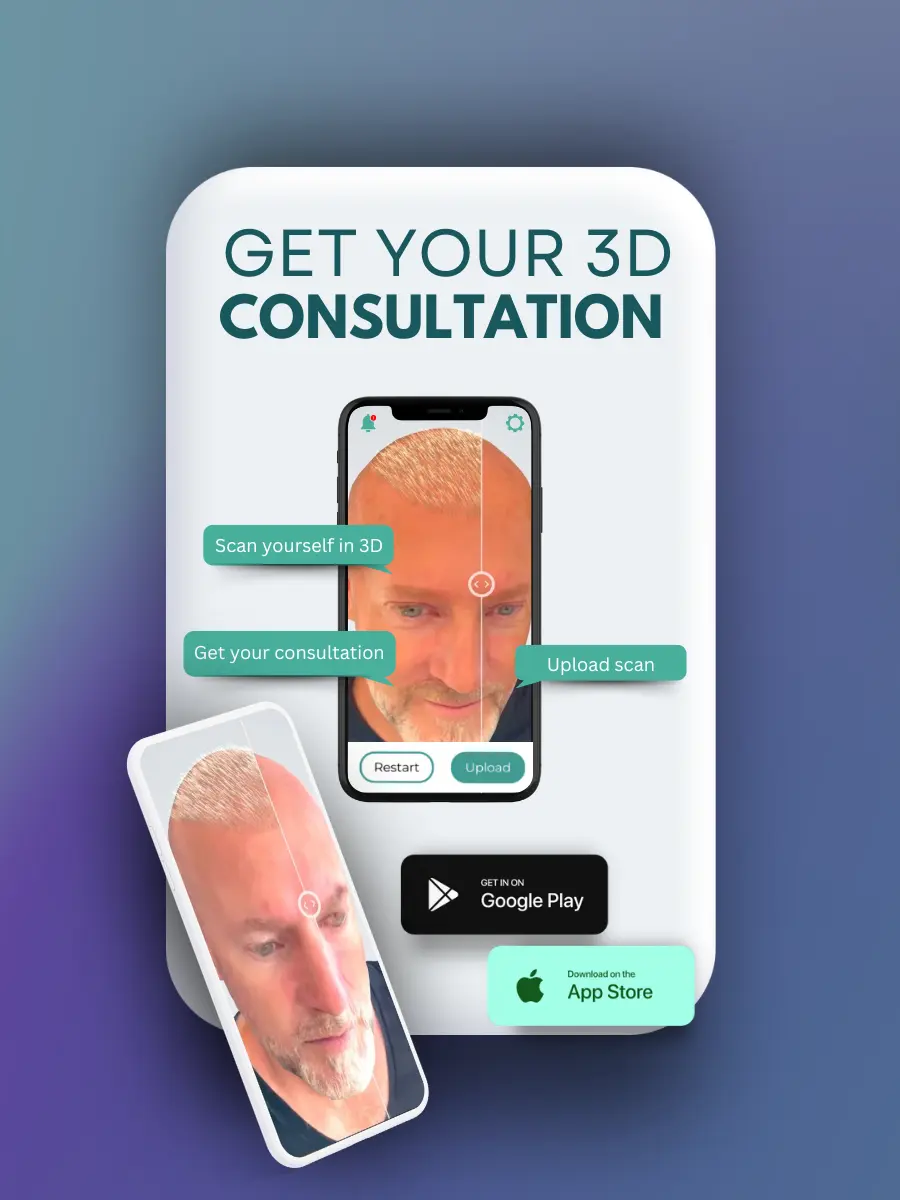Virtual hair transplant consultations have emerged as a transformative approach in the field of hair restoration, providing patients with a convenient way to explore treatment options without visiting a clinic in person.
These consultations utilize video calls, online platforms, and advanced diagnostic tools to deliver personalized advice and preliminary assessments. As the popularity of telemedicine grows, so does the demand for virtual hair transplant consultations.
My name is Emma Wright, your resident hair transplant and hair restoration specialist. Today we’ll take a look at virtual hair transplant consultations. But the question remains: how effective are they in diagnosing and planning hair transplant procedures?
This article delves into the benefits, limitations, and future potential of virtual hair transplant consultations to determine their role in modern hair restoration.
What Are Virtual Hair Transplant Consultations?
Virtual hair transplant consultations involve a remote interaction between patients and specialists through platforms like Zoom, Skype, or telemedicine-specific tools. Patients share their medical history, hair loss concerns, and goals while doctors assess their hair loss patterns using video feeds or photos.
This trend is fueled by advancements in technology and the increasing need for accessible healthcare solutions. Virtual hair transplant consultations are particularly advantageous for patients with busy schedules, those in remote locations, and individuals seeking a preliminary evaluation before committing to an in-person appointment.
Benefits of Virtual Hair Transplant Consultations
-
Convenience and Accessibility
Patients can connect with specialists from anywhere, eliminating the need to travel long distances or take time off work. This is especially beneficial for individuals residing in rural or underserved areas with limited access to qualified hair restoration clinics.
-
Cost-Effective Preliminary Assessments
Virtual hair transplant consultations are often priced lower than traditional in-office visits, making them an attractive option for those exploring hair transplant solutions. Some clinics even offer free or low-cost virtual consultations to encourage prospective patients to take the first step toward hair restoration.
-
Access to Global Expertise
Patients can consult with renowned specialists from around the world without geographical limitations. This is valuable for individuals seeking a second opinion or wanting to explore their options before selecting a clinic.
-
Significant Time Savings
Scheduling, traveling, and waiting times are minimized, allowing patients and doctors to focus on discussing treatment options effectively.
Effectiveness of Virtual Hair Transplant Consultations
The effectiveness of virtual hair transplant consultations is largely determined by the quality of communication, the patient’s ability to provide accurate information, and the specialist’s expertise in using digital tools for assessment.
- Preliminary Diagnosis: Specialists can often identify common hair loss conditions such as androgenetic alopecia by analyzing photos or live video.
- Eligibility for Hair Transplants: Virtual consultations help doctors assess donor hair density and advise whether a patient is suitable for a transplant.
- Treatment Recommendations: Specialists can recommend suitable treatment options, including surgical and non-surgical methods, or guide patients toward a new hair loss treatment that may be effective for their specific condition.
While effective for initial consultations, they cannot entirely replace in-person evaluations when precise measurements or physical scalp examinations are required.

Technology Enhancing Virtual Hair Transplant Consultations
Technology has played a crucial role in enhancing the effectiveness of virtual hair transplant consultations.
- Scalp Scanning Apps: Patients can upload high-quality images of their scalp, providing doctors with better visuals for evaluation.
- AI-Powered Analysis: Artificial intelligence tools assess hair loss patterns, donor hair availability, and potential transplant outcomes.
- Virtual Hairline Design: Advanced software allows patients to visualize their post-transplant results, offering a clearer understanding of the procedure’s potential.
These advancements make virtual consultations increasingly reliable for diagnosing and planning hair restoration treatments.
Limitations of Virtual Hair Transplant Consultations
-
Lack of Physical Examination
Physical evaluation is essential for assessing factors like scalp elasticity, donor hair quality, or skin conditions, which are difficult to gauge remotely.
-
Variable Image Quality
Poor lighting, low-resolution cameras, or inadequate angles can affect the accuracy of virtual assessments.
-
Unrealistic Expectations
Patients may misunderstand the scope or limitations of virtual consultations, leading to unrealistic expectations.
-
Privacy and Security Concerns
Clinics must address privacy concerns and comply with telemedicine regulations to protect patient information.
When to Choose Virtual vs. In-Person Consultations
- Choose Virtual Consultations For:
- Initial assessments to determine eligibility for hair transplants.
- Exploring non-surgical hair restoration options or learning about dietary factors such as foods that cause hair loss.
- Seeking a second opinion or consulting with experts in another location.
- Choose In-Person Consultations For:
- Comprehensive evaluations, including donor hair quality and scalp elasticity.
- Finalizing surgical plans and discussing post-procedure care.
- Complex hair loss patterns or underlying scalp conditions.
What to Expect During a Virtual Hair Transplant Consultation
- Pre-Consultation Questionnaire
Patients fill out a form detailing their medical history and hair loss concerns. - Photo or Video Submission
High-quality images or live video sessions are used to show the scalp from various angles for evaluation. - Discussion of Goals and Treatment Options
Doctors discuss the patient’s goals, recommend treatment options, and answer questions to ask during hair transplant consultations, ensuring the patient understands the process thoroughly. - Next Steps
If eligible, the patient may be scheduled for an in-person visit for further evaluation and planning.
The Future of Virtual Hair Transplant Consultations
As telemedicine evolves, virtual hair transplant consultations will become even more sophisticated. Innovations like 3D imaging, virtual reality simulations, and AI-driven predictive tools will enhance their accuracy and effectiveness.
These advancements will allow clinics to provide high-quality consultations, bridging the gap between accessibility and expertise in hair restoration. Some clinics are also incorporating treatments like PRP hair loss therapy into their discussions, offering patients insight into additional solutions beyond transplants.
Conclusion
Virtual hair transplant consultations are a valuable and convenient way for patients to explore hair restoration options. While they cannot entirely replace in-person evaluations, they are highly effective for initial diagnosis, treatment planning, and patient education.
As technology continues to advance, virtual consultations will play an even greater role in hair restoration practices, offering patients worldwide a practical and accessible solution.
By understanding their benefits and limitations, individuals can make informed decisions about their hair transplant procedures. Virtual hair transplant consultations are here to stay, revolutionizing the patient experience and reshaping the future of hair restoration.














